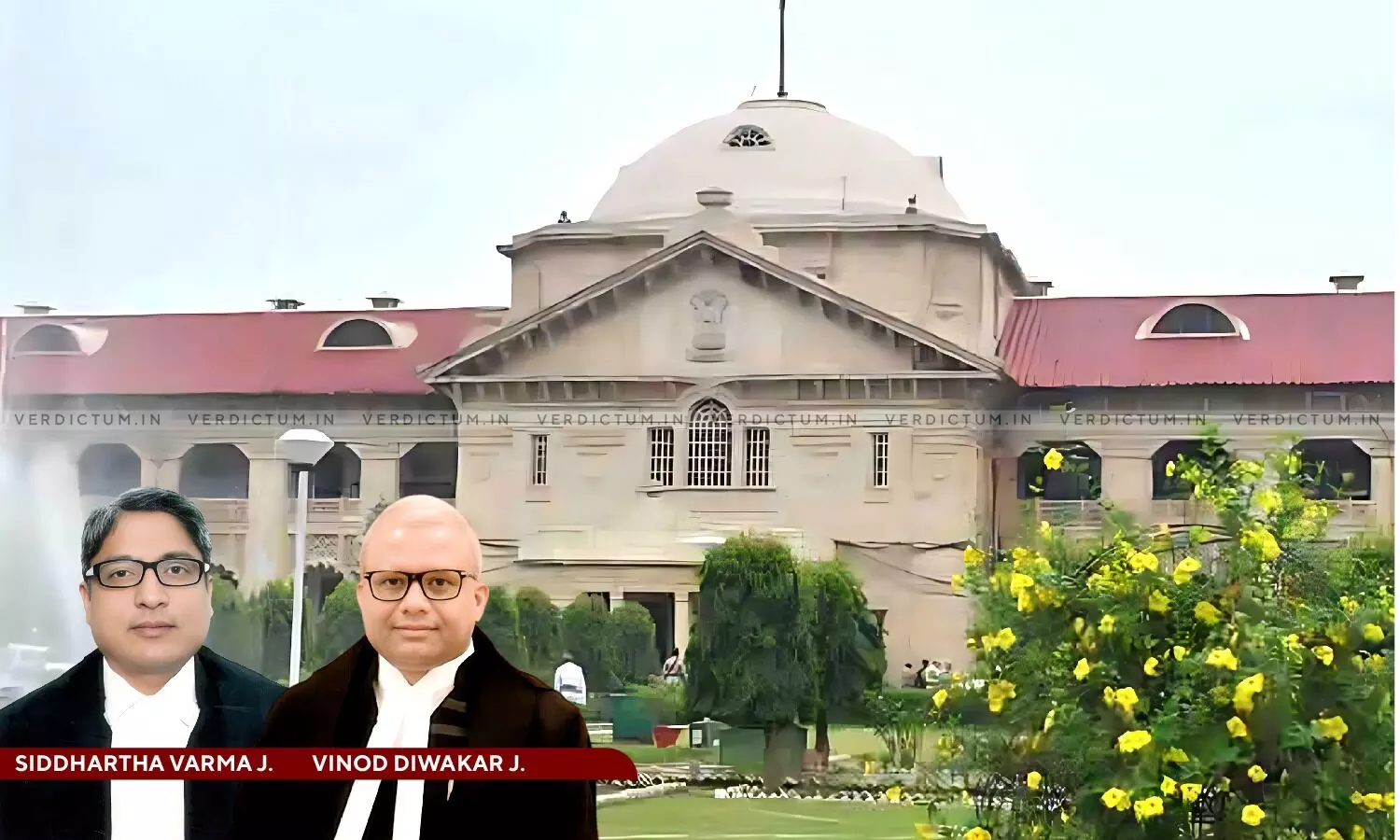
Both Oral Testimony & Documentary Evidence Paramount To Assess Admissibility Of Evidence: Allahabad HC Acquits Man In 1981 Murder Case
 |
|The Allahabad High Court has set aside a Trial Court Order convicting a man in a murder that took place in 1981.The High Court clarified that both oral testimony and documentary evidence is paramount, to assess the admissibility of the evidence presented during the trial.
The High Court was hearing an appeal filed by an appellant-accused challenging the order of the Trial Court whereby he was convicted and sentenced to undergo life imprisonment for the offenses under Sections 302 IPC and section 25 of the Arms Act.
The Division Bench of Justice Siddhartha Varma & Justice Vinod Diwakar asserted, “The cumulative effect of both oral testimony and documentary evidence is paramount, to assess the sterling quality and admissibility of the evidence presented during the trial.”
Advocate N.K. Saxena represented the appellant while A.G.A K.P. Shukla represented the Respondent-State.
The incident is of the year 1981 when a written complaint was lodged by one Siddha- father of the deceased Bahadur with the allegation that the accused Ram Krishun Singh shot dead his son with a double barrel gun. On hearing the rescue cry, the complainant also reached the place of incident. The deceased died on the spot. The sole motive behind the commission of murder was that even though the accused had reprimanded the deceased, the deceased kept working with one Bhagwan Singh with whom he had animosity.
The Chief Judicial Magistrate took the cognizance and after complying with the provisions of section 207 Cr.P.C. committed the case to the court of sessions for its trial. The trial court framed the charge under section 302 IPC against the accused-appellant and a separate charge was framed under section 25(1)(a) and 25(1)(b) of the Arms Act .The trial court vide the impugned judgment convicted the accused-appellant Ram Krishna, and sentenced him to undergo life imprisonment.
It was the appellant’s case that the ocular testimony did not corroborate with the medical and scientific evidence, therefore, the testimony of PW-1(father of deceased) needed appreciation with great caution. The testimony of eye witness PW-1 & PW-3 couldn’t be relied upon because it contained material contradictions and improvements.
The Bench noted that the conviction was based on the testimony of PW-1 & PW-3 and the Trial Court while recording the finding of conviction against accused-appellant, believed that there was no question to disbelieve the testimony of PW-1 Siddha, who is father of the deceased and was present at the time of incident. The Trial Court also found the statement of a child-Kumari Chaman (PW-3), wholly reliable but not marred in material discrepancy or contradiction even though she was subjected to a nagging cross examination at the hands of experienced lawyers.
“The court must weigh the credibility and reliability of both oral and documentary evidence to determine their overall probative value. To assess evidence as of sterling quality, the court should consider various factors, including consistency, corroboration, relevancy, and authenticity. Additionally, the court should evaluate the demeanor of the witnesses, the clarity and coherence of the testimony, and veracity of the documentary evidence”, the Bench held.
The Bench further added, “...but the failure of the Investigating Officer in sending the blood-soaked soil and pellets recovered from the deceased cannot be said to fatal for prosecution, if the same is fully established from the testimony of the sole eyewitness (PW-1), in whose presence the fire was shot at on the deceased, and because of the firearm injury, the deceased died.”
One of the facts which assumed significance was that the witness Bhagwan Singh police witness who was figured in the FIR, had animosity with the accused but he wasn’t produced. The Bench made it clear that the non-production of witness Bhagwan Singh created a serious doubt on the prosecution story.
Reference was also made to the judgment of the Supreme Court in Vadivelu Thevar v. State of Madras where the Top Court has carved out three categories of witnesses. These are ones who are wholly reliable, wholly unreliable, and neither wholly reliable nor wholly unreliable. Applying the law laid down in Vadivelu Thevar (supra), the Bench concluded that the testimony of the first witness was neither wholly reliable nor wholly unreliable and basing conviction on such testimony would be unsafe.
“In the given facts-circumstances, the appellant is entitled for the benefit of doubt as suspicion so raised can not take the place of evidence”, the Bench held while allowing the appeal and setting aside the conviction of the appellant-accused.
Cause Title: Ram Krishna vs State of U.P [Neutral Citation: 2024:AHC:172451-DB]
Appearance:
Appellant: Advocates N.K. Saxena, Ashok Kumar Dwivedi & Ram Kishor Gupta
Respondent: A.G.A K.P. Shukla